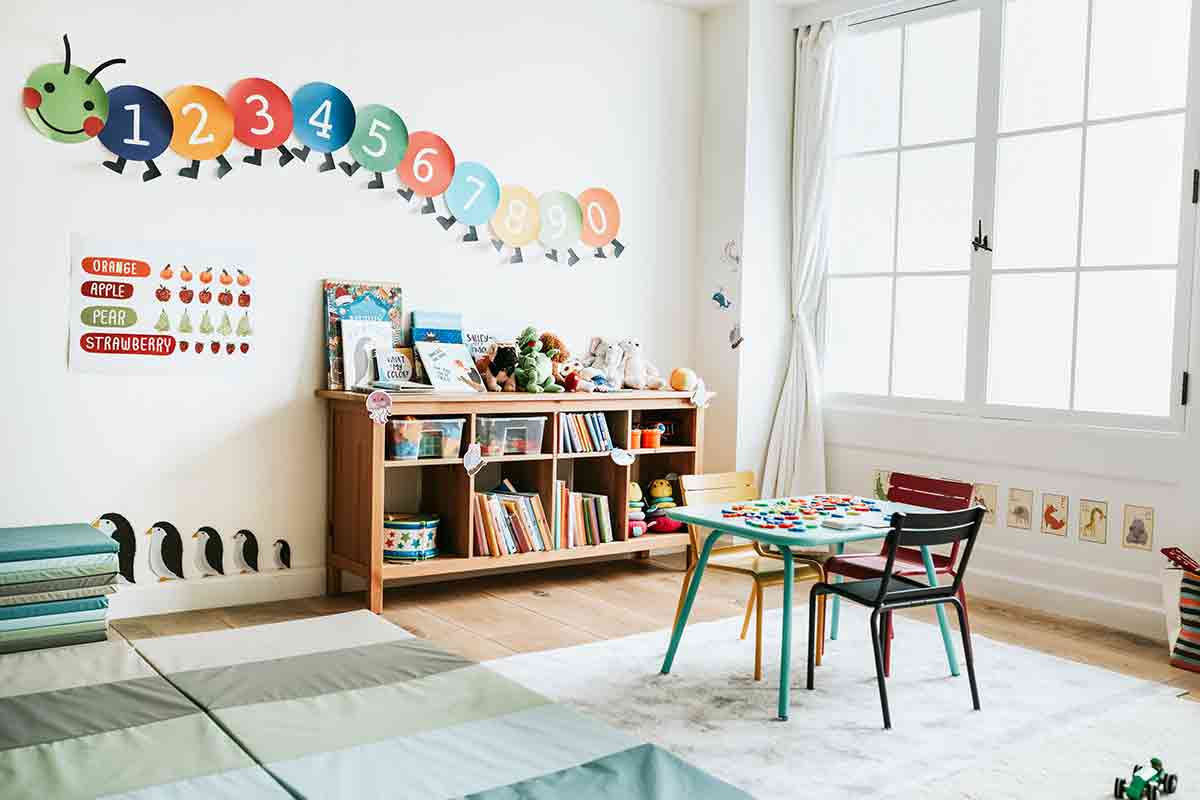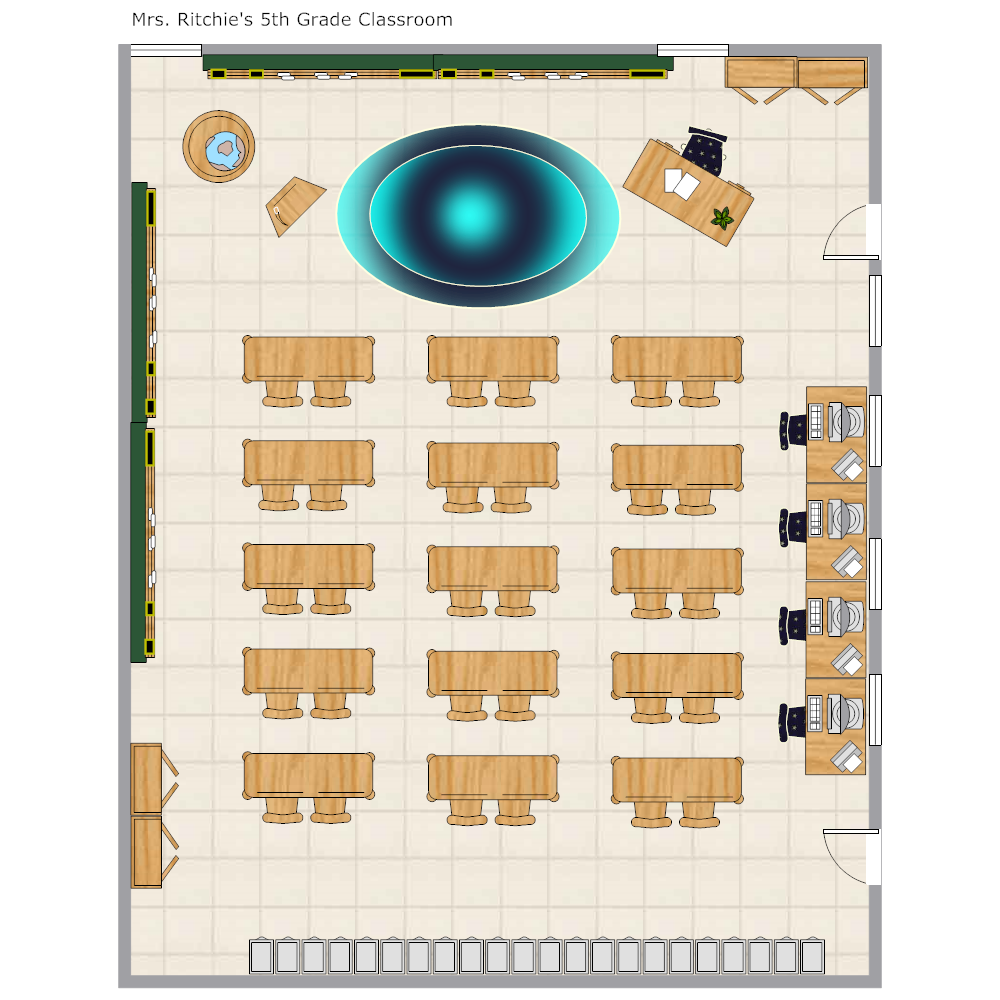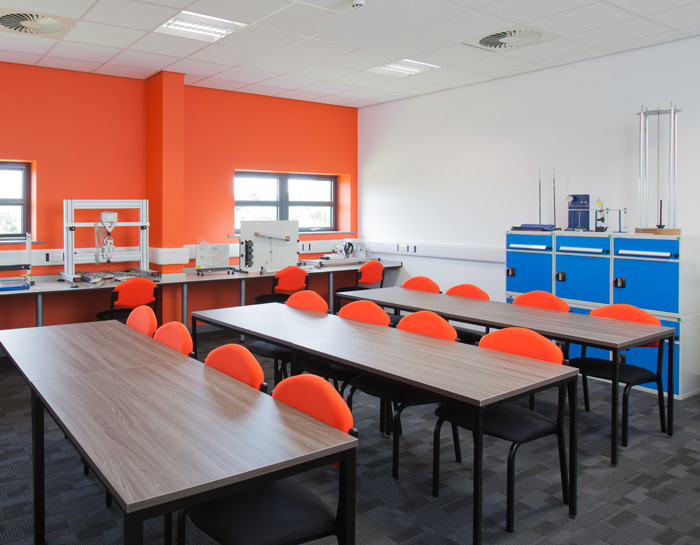Table Of Content

The circle or ‘o-shaped classroom’ can facilitate democratic discussion because all students are an equal distance from one another and facing each other. The teacher can also stand in the middle of the circle and very easily move from student-to-student or give science demonstrations. The open space in the middle of the desks is clearly the focal point or ‘action zone’ in this sort of space.
Teacher-designed classrooms help students feel supported, calm and creative - School News Network
Teacher-designed classrooms help students feel supported, calm and creative.
Posted: Mon, 25 Sep 2023 07:00:00 GMT [source]
Classroom Layout Options for Effective Learning
The Future of Learning Environments: Flexibility, Simplicity, Connectivity - Spaces4Learning
The Future of Learning Environments: Flexibility, Simplicity, Connectivity.
Posted: Wed, 03 Apr 2024 07:00:00 GMT [source]
Since learners can spend long periods in a learning space, the space should address humans needs that go beyond the obvious components like technology and furniture. For example, we know how distracting it can be if a room is too cold, has flickering lights, or provides uncomfortable furniture that doesn't encourage collaborative work. The recent trend to include cafes and coffee shops in or near informal learning spaces indicates the importance of addressing the full range of human needs. We also know, from first-hand experience, the ways in which the built environment — defined in Wikipedia as "human-made surroundings that provide the setting for human activity"— influences what we do.
Class Management & Seating Arrangements: 8 Creative Solutions
The ease with which students could reconfigure their learning spaces meant they could quickly join with others and either help or receive help as needed. The first classroom configuration includes students seated at groups of tables in a four-person, small group format. The second configuration changes the layout so that chairs are rearranged to face a blackboard or projector.
Pros and Cons of the Workstations Layout
I used to take time after school (seriously 15 minutes, not long) to straighten up tables, put away materials, and hopefully get my materials out and prepped for the next day. When my students came to my class, they knew what to do and where to go because their class was organized. I know many teachers at the end of the day have procedures where students aid in cleaning the room. That’s a great way to have them help keep the classroom organized and also declutter their minds. I move all the furniture to one side of the room, and then start to envision how my classroom would best function. Furniture should create well-defined areas and easily accessible pathways to maneuver around the classroom.
Flexible Classroom Layouts Provide the Environment Kids Need
The desks tend to take up most of the area of the classroom, minimizing options for moving students to the floor for non-desk related activities. Students are all facing one another, enabling discussion across the classroom. This discussion format is great for democratic style engaged learning spaces where there is no one person at the ‘head of the discussion. There is not much open space for students to engage in active learning on the floor of the classroom.
Having students audit the room this way will help us see it differently. The good news is that the principles of learning-friendly design can still be applied without those things. There are plenty of changes you can make to your classroom—without a lot of money or space—to make it a much better place for students to learn.

Streamline Your Classroom Storage With PowerGistics
We plan to cover the PreK-12 and Higher Education EdTech sectors and provide our readers with the latest news and opinion on the subject. From time to time, I will invite other voices to weigh in on important issues in EdTech. We hope to provide a well-rounded, multi-faceted look at the past, present, the future of EdTech in the US and internationally. The ViewSonic Education Ecosystem blends hardware, software, and services to empower educators, enhance learning, and streamline operations. Hang up artwork or projects on walls or set them up in displays so everyone can admire their hard work and dedication. We often expect students to passively wait until we present opportunities to create, and then we expect them to turn on that creativity like a faucet.

The tables in this format are designed for students to sit alongside one other student. Some teachers may want ask students to be silent and work along, mimicking a rows and columns format (see above). However, there is less space in the middle than in the traditional horseshoe model, meaning there is less free room for presentations, modeling and active learning. It appears a deliberate design feature of this layout that students do not have shared desk space and have no peers directly facing them.
I try to only put items on my walls that are meaningful to my students and their learning at that moment—no fluff, no extras, just what’s important. Thus, most items stay on my walls for no longer than a month (the usual length of our units). I know that might sound crazy, but I felt that if it wasn’t in the top three things I was teaching that week, I didn’t need to display it. Another study looked at achievement levels of kindergartners placed in either a well-decorated or a sparse classroom. Results showed that the students in the well-decorated classroom not only spent more time distracted from learning, but also performed lower on post assessments than their peers in the sparse room.
Students like to see evidence of their achievements, so maintaining a space for finished work can become a point of pride. Displaying finished projects can also make learning tangible, so students can easily point to the outcomes of their projects — whether it’s a diorama from a unit on marine ecosystems or posters illustrating fractions. In teacher-centered learning, the front of the classroom draws all the attention; this is the teacher’s domain. In student-centered classrooms, however, the teacher’s space is de-emphasized. When a teacher sits or moves among students during lessons, it encourages more dynamic participation and student-teacher dialogue. Arranging chairs in a big circle – as though students are in a conference – is ideal for classroom discussions.
Classroom design is not merely a matter of arranging desks and chairs; it is a dynamic force that influences the behavior, mood, and interactions of both students and educators. Research suggests that a well-designed classroom can significantly impact student outcomes, fostering a conducive atmosphere for effective teaching and learning. In the intricate tapestry of education, the physical environment in which learning unfolds is a crucial yet often underestimated element. Classroom design, the amalgamation of art and science, plays a pivotal role in shaping the educational experience for students.
The chair arrangement follows a curved seating pattern with linearly increasing seats. The seating pattern is divided into two, with a walking aisle in the middle. Since the room is big, it shows two doors that ensure a quick and easy exit through the room.
Dylan Zuccarello, another giveaway winner, told us his fifth graders at Lawton Chiles Elementary in Florida have benefitted from larger desks that easily fit their computers and binders. They're also benefiting from a more supportive classroom layout that allows them to easily turn around and talk to their peers. Whether it’s your first year teaching or you’ve been in this profession for decades, the task of creating a vibrant and collaborative learning environment can be both exciting and overwhelming. Conversely, certain aspects of learning require quiet, independent study, including reflection and processing of information. This time and space should also be built into our curricula and our classrooms.

No comments:
Post a Comment